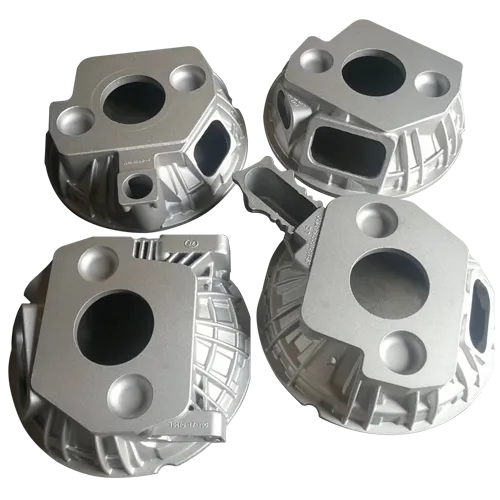Mobile:+86-311-808-126-83
Email:info@ydcastings.com
Innovative Solutions for Precision Casting in Modern Foundry Operations
The Evolution and Importance of SS Casting Foundry in Modern Manufacturing
In today's fast-paced industrial landscape, the demand for precision-engineered components has surged significantly. One sector that plays a crucial role in meeting this demand is the casting foundry industry, particularly those specializing in stainless steel (SS) casting. A stainless steel casting foundry utilizes advanced techniques and equipment to produce components that are not only durable but also possess exceptional resistance to corrosion and wear. This article explores the significance of SS casting foundries, their historical development, manufacturing processes, applications, and future trends.
Historical Development of SS Casting Foundries
The history of casting can be traced back to ancient civilizations. However, the modern casting foundry industry began to take shape during the Industrial Revolution. The introduction of new materials, including stainless steel, revolutionized the casting process. Stainless steel, an alloy of iron, chromium, and a small amount of carbon, was first developed in the early 20th century. Its remarkable properties, such as high corrosion resistance and strength, opened new avenues for various industries, leading to the establishment and growth of SS casting foundries.
These foundries evolved over time, adopting innovative techniques and technologies to improve efficiency and product quality. With the rise of computer-aided design (CAD) and computer numerical control (CNC) machining, foundries have embraced automation, which has significantly enhanced precision in production.
The Manufacturing Process
The manufacturing process in an SS casting foundry typically involves several key stages pattern making, mold making, melting, pouring, and finishing
.1. Pattern Making The initial step involves creating a pattern, typically made from wood, metal, or plastic, which represents the final product's shape. This pattern is crucial for creating molds.
2. Mold Making Molds are then made around the pattern. In the case of stainless steel casting, foundries often use sand casting, investment casting, or lost wax casting methods, depending on the complexity and precision required for the final component.
3. Melting Stainless steel scrap or ingots are melted in a furnace. The melting process requires precise temperature control to ensure the right composition and properties of the final product.
4. Pouring The molten stainless steel is carefully poured into the prepared molds. This stage must be executed with reliability to avoid defects such as cold shuts or inclusions.
ss casting foundry

5. Finishing Once the metal has cooled and solidified, the mold is removed, and the casting is subjected to various finishing processes, including machining, heat treatment, and surface treatment, to achieve the desired specifications.
Applications of SS Castings
The versatility of stainless steel castings has led them to find applications across numerous sectors. These include
- Aerospace Components such as brackets, housings, and valves are manufactured for aircraft systems, where strength and corrosion resistance are paramount. - Automotive Engine components, exhaust systems, and structural parts made from SS castings enhance performance and longevity in vehicles. - Medical Equipment Surgical instruments, sterilization trays, and other healthcare-related devices benefit from the biocompatibility and durability of stainless steel. - Marine Industry SS castings are employed in ship components and offshore structures due to their excellent resistance to saltwater corrosion.
Future Trends
The future of SS casting foundries is bright, driven by advancements in technology and an increasing focus on sustainability.
- Additive Manufacturing The integration of 3D printing technologies is transforming the way patterns and molds are produced, allowing for more complex designs and reduced material waste.
- Sustainable Practices Foundries are increasingly adopting eco-friendly practices, including recycling scrap metal and utilizing energy-efficient processes to minimize their environmental impact.
- Smart Manufacturing With the rise of Industry 4.0, foundries are likely to incorporate IoT devices and AI-driven analytics to optimize production, predict maintenance needs, and improve overall efficiency.
In conclusion, SS casting foundries are integral to modern manufacturing, offering robust solutions and innovative designs across various industries. As technology continues to advance, these foundries will play an even more critical role in shaping the future of engineering and design, ensuring that they meet the evolving needs of the global market. The commitment to excellence, sustainability, and innovation will enable SS casting foundries to remain at the forefront of manufacturing for years to come.
-
Understanding Metal Casting TechniquesNewsApr.02,2025
-
Understanding Exhaust Manifolds for Enhanced Engine PerformanceNewsApr.02,2025
-
The World of Metal FabricationNewsApr.02,2025
-
Key Components for Pump and Turbo EfficiencyNewsApr.02,2025
-
Essential Tools for Automotive Maintenance and RepairNewsApr.02,2025
-
Durable Valve Components for Effective Water ManagementNewsApr.02,2025











